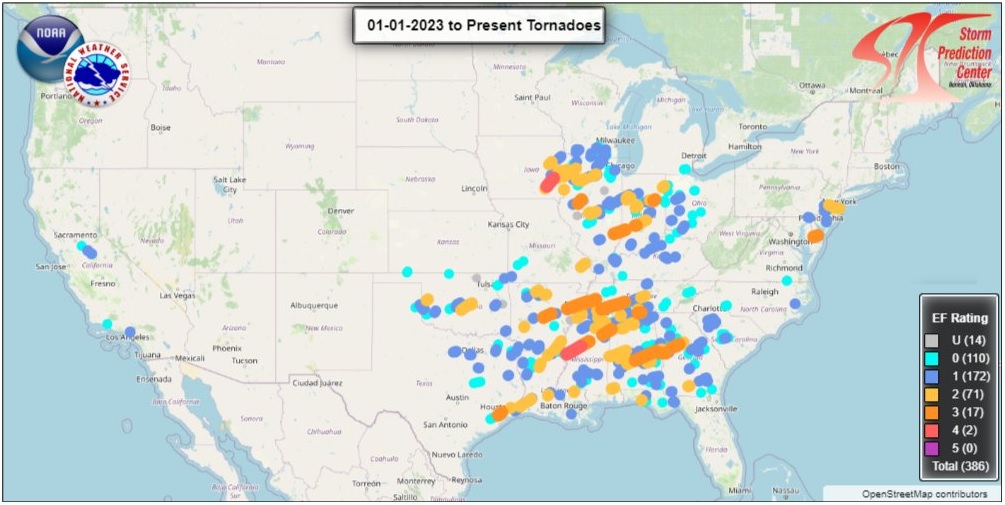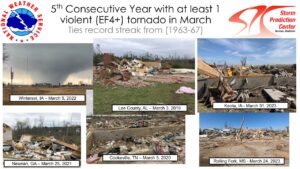
According to the National Weather Service’s Storm Prediction Center (SPC), the year is off to a busy start with severe weather, outpacing every year but one before it. According to preliminary National Weather Service storm surveys that may change as storm data is finalized, there have been 389 tornadoes from January through March this year. This would rank the period in 2023 as the second busiest tornado year on record, only behind the 398 that were recorded in 2017. The third most number of tornadoes recorded over this period was in 2008 with 360.

According to the SPC, March severe weather reports were well above average and almost doubled the previous 10-year average.
Due to the outbreak that unfolded on March 31, with several tornadoes reported across New Jersey, Delaware, and Pennsylvania, March 2023 has the 5th most March tornadoes on record, with 162. The most active March for tornadoes was last year at 218, followed by 192 in 2017, and 180 in 1976.
March 2023 also had two violent tornadoes. The first was an EF-4 that hit Rolling Fork, Mississippi on March 24; the second was an EF-4 on March 31 in Keota, Iowa. This is now the fifth consecutive year with at least 1 violent tornado in March, tying the record longest streak of 5 from 1963 to 1967. This type of record keeping was first started in 1950.
March 31 has the 6th most tornadoes on a single convective day on record since 1950, with 108 tornadoes. That number could grow further as the National Weather Service completes storm surveys and studies for storms that hit during the final days of March.
The Enhanced Fujita Scale or EF Scale, which became operational on February 1, 2007, is used to assign a tornado a ‘rating’ based on estimated wind speeds and related damage. When tornado-related damage is surveyed, it is compared to a list of Damage Indicators (DIs) and Degrees of Damage (DoD) which help estimate better the range of wind speeds the tornado likely produced. From that, a rating (from EF0 to EF5) is assigned. In general, EF-0 tornadoes have 65-85 mph winds, EF-1 have 86-110 mph winds, EF-2 have 111-135 mph winds, EF-3 have 136-165 mph winds, EF-4 have 166-200 mph winds, and EF-5 tornadoes have winds in excess of 200 mph. The EF Scale was revised from the original Fujita Scale to reflect better examinations of tornado damage surveys so as to align wind speeds more closely with associated storm damage., with the new scale related to how most structures are designed.